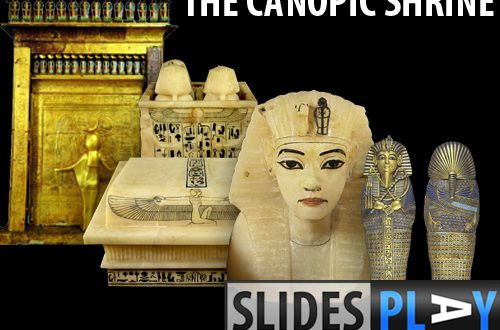 Luxor, Egypt is one of the most culturally rich parts of the world and is often described as the “World’s Greatest Open Air Museum” for all the various tombs, temples and monuments in the area. Luxor is close to the site of the ancient city of Thebes, the capital of the New Kingdom and famed for its luxurious standards of living and high social order. The city served as an important trading route, and the base of political power in Egypt which made it a favourable destination for Pharaohs and nobles to be buried in tombs. The vastness of the spread of these necropoleis makes satellite imagery favourable for looking at the site of Luxor, and GeoEye has kindly shared a high resolution map of the area with Heritage Key.
Luxor, Egypt is one of the most culturally rich parts of the world and is often described as the “World’s Greatest Open Air Museum” for all the various tombs, temples and monuments in the area. Luxor is close to the site of the ancient city of Thebes, the capital of the New Kingdom and famed for its luxurious standards of living and high social order. The city served as an important trading route, and the base of political power in Egypt which made it a favourable destination for Pharaohs and nobles to be buried in tombs. The vastness of the spread of these necropoleis makes satellite imagery favourable for looking at the site of Luxor, and GeoEye has kindly shared a high resolution map of the area with Heritage Key.
The map shows just how large a scale the tombs of various rulers spread across, and gives an idea of just how important a city Thebes was during the Ancient Egyptian era. Many of these tombs are the subject of a new book “The Lost Tombs of Thebes: Life in Paradise” by Supreme Council of Antiquities director Dr Zahi Hawass with beautiful images by the renown Egyptology photographer Sandro Vannini. You can read Sandro’s accounts on shooting the Theban tombs here at Heritage Key, as well as watching a video on the Theban Tombs with Dr Hawass and Dr Janice Kamrin.
So what can you spot in the below image?The following famous landmarks are all in there:
The Valley of the Kings, which shot to fame in 1922 when an archaeologist by the name of Howard Carter excavated the Tomb of King Tutankhamun, one of the most important finds in archaeology which captured the minds and hearts of the public. There are 63 tombs discovered in the Valley of the Kings, with the most recent being just a few years ago and leaving open some questions as you can watch Dr Hawass explain in this video – The Riddle of KV63. Excavations continue in the Valley of the Kings and you can see the latest discoveries in our video here, and you should definitely watch Dr Hawass’ Search for KV64 in the Valley of the Kings.
|
|
Click the (+) and (-) buttons to zoom in and out of this image, or double click.
Drag the image with your mouse to move to a different area.
The Valley of the Queens is the lesser known counterpart to the Valley of the Kings, and – as the name suggests – is home of tombs belonging to the Pharaoh’s Queens and children. Many tombs in the Valley of the Queens have been lavishly decorated and over seventy have been discovered so far, such as QV66 – the tomb of Queen Nefertari – which is often described as the Sistine Chapel of Ancient Egypt.
Medinet Habu is an area in the foothills of Thebes which is home to the Temple of Amun and the Temples of Ay and Horemheb, but is synonymous with the Mortuary Temple of Ramesses III. At over 150 metres long, the temple boasts impressive architecture and art, and also contains the chapels of Amenirdis I, Shepenupet II and Nitiqret within its complex.
The Ramesseum is located nearby and built in a similar architectural style; it is the Mortuary Temple of Ramesses II. It is thought that the construction of this temple spanned across 20 years, and is over 200 metres long. Although now ruined, the Temple of Seti I was right next to the Ramesseum.
Deir el-Medina was an Ancient Egyptian village where the workers of tombs in the Valley of the Kings were housed. The site offered archaeologists a fascinating insight into the lives of the artisans who created the famous tombs of Egypt, and gave insight into their daily lives.The village is laid out in a amphitheatrical shape, located just south of the Valley of the Kings.
The Theban Tombs of the Nobles are a collection of tombs belonging to the power brokers and courtiers of Ancient Egypt. Over 400 of these tombs have been found so far, as archaeologists continue excavations in the area. Dr Farouk Gomaa is working with his team at TT34 and searching for the sarcophagus of Montuemhat (Watch his interview with Heritage Key here) while Dr Hourig Sourouzian is excavating the Mortuary Temple of Amenhotep III (Click here to view Dr Sourouzian’s interview with Heritage Key).
The Mortuary Temple of Amenhotep III is famous for it’s Colossi of Memnon – two stone statues of Amenhotep III that tower up 18 metres high at the entrance of the site.
South of Medinet Habu is the Malkata palace complex which was built by Amenhotep III and dedicated to his wife. Home to the Temple of Amun, as well as several palaces, homes and apartments, as well as public halls. Also nearby is the Temple of Isis, known as Deir al-Shalwi.
The Satellite Image is courtesy of GeoEye.




